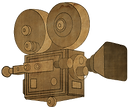
If a million people see my movie, I hope they see a million different movies
quentin tarantino


THERE ARE LOADS OF COOKIES BELOW.
PLEASE
REFRESH AT LEAST TWICE
BEFORE SURFING TO ENSURE ALL CONTENT
THERE ARE LOADS OF COOKIES BELOW.
PLEASE
REFRESH AT LEAST TWICE
BEFORE SURFING TO ENSURE ALL CONTENT
MEDIA LANGUAGE
CINEMATOGRAPHY --- EDITING --- SOUND --- MISE EN SCENE
RESEARCH
CINEMATOGRAPHY
The art or technique of motion-picture photography.
EDITING
The process of selecting and preparing visual and audible media used to convey information.
The audio which is heard in film to convey mood or present dialogue in context of the film.
SOUND
MISE EN SCENE
The arrangement of everything that appears in the framing – actors, lighting, décor, props, costume
CINEMATOGRAPHY
A micro element in the film industry.
The use of camera positions and movements in order for the director to establish the changes of situation and mood.
The Director of Photography
-
They are key Heads of Department on film productions and provide a film with its unique visual identity and look.
-
DoPs must discover the photographic heart of a screenplay.
-
They create the desired look using lighting, framing, camera movement.
-
They manage the camera and lighting crew.
-
After reading the screenplay, DoPs work with the Director to discuss the visual style of the film, help create and shape the Director’s vision.
-
They research and prepare for shooting at the locations, and prepare a list of required equipment needed.
-
During post production, DoPs attend the digital grading of the film.
Recap of topic:
Cinematography is a micro element used by the film industry to capture the visual contexts of the motion-picture films. They create the intended meaning of the visual medium through employing techniques such as framing and movement, responsible by the Director of Photography.
Research; Understanding the concepts of what it takes to be a part of making, creating, framing and thinking about the cinematographic aspects and techniques of the structure and heart of film and media is essential to film-making.


Application: Indiana Jones Sequence
After learning about the job of the Director of Photography and their responsibilities, we moved on to the shot types, camera angles and the movements employed in films throughout history to create various meaning and mood.
FEEDBACK
WWW
EBI
-
Shot types labelled clear and correctly used in scene
-
Performance was nice
-
Narrative is simple
-
Continuity maintained
-
A bit clearer narrative
-
Sound needed
-
Colour Grading?
-
A bit of visual effects
3 MAIN ASPECTS:
LIGHTING
FRAMING
MOVEMENT
Reflect; Now understanding each shot types and their means of capturing mood and meaning in film, an application to a small sequence above demonstrates the learning journey of relating the shots to build tension and the emphasis of the "rock's" importance through close up and eye level...etc.
Taking it further, I looked into applying the techniques and breaking down its usage on conveying dominant themes in the JAWS clip below.
EXAM Q:
Watch the following ‘Jaws’ clip and evaluate how effective the meaning, situation and mood is communicated through the cinematography.
in this question, refer to the aspects of FRAMING and MOVEMENT only.
In the ‘Jaws’ clip, cinematography is significant in portraying the meaning and themes that the director’s vision aims to convey through the guidance of the Director of Photography, alongside the camera and rigging crew.
The theme of paranoia and anxiety is featured throughout the clip from the protagonist, Chief Brody. The camera angle of over the shoulder in the beginning makes the two-shot dialogue between the middle aged man and Brody convey as an obstacle in his job, with the man positioned more center and larger in frame, and Brody pushed towards the far right to suggest lack of power, instability and a sense of uncomfortability. This is once again featured where the old man is positioned more center and larger over Brody’s smaller figure, and is also exposed to a medium long shot of his legs- showing his entire body in a grasp of coming danger. At the diegetic scream of the girl, the camera quickly tilts up with Brody’s head to emphasize the change of interest to the sea and people, which is framed in a long wide shot in over the shoulder of the man. This wide shot may convey the helplessness and distance the audience and Brody’s POV has on the people at sea, building a sense of tension, before revealing as a false alarm.
The cinematographic aspect of framing serves as a message and metaphoric emphasis on Brody’s insecurity in his job as a lifeguard. Seen again at the far right corner in an eye level shot, this takes away the power Brody has -as the ideal heroic protagonist- down to the same level of the audience. This only puts the audience in the same position as him, where the threats and tension becomes more personal and engaging. The children then run towards the sea and away from Brody, before disappearing out of frame to the left, suggesting that they are out of his hands and highlighting an insecurity that may pose as a threat. The sequence employs the rules of third, which presents an absence of stimuli in the middle of the frame, having Brody to the far right and the children retreating to the left, which may convey a sense of loneliness and vulnerability in its pairing of mise en scene and framing.
The tension is risen when the camera movement of a point of view is complemented with shaky camera to hide the physical identity of the antagonist, being the shark. The gloomy and dark lighting in the water presents the track-in approach to the floating victim as vulnerable and threatening. With the camera being shaken, the stability which the audience possesses when watching a stationary shot and its stability, is taken away in this build-up, that threatens the life of the victim, but also the viewership and comfort the consumer potentially holds on to.
The climatic realisation of present danger is portrayed dramatically by the non-diegetic music, and the diegetic scream of the victim. The cinematography captures this horrific scene from an eye level of a slightly high angle shot, looking down onto the wide big long shot of the centered shark mauling the child. The long distance created now provides helplessness for the audience, and the high angle shot looking down on the murder only solidifies them as a tied and useless bystander. The centering of the shark provides all attention and importance to the killing, which dramatizes the shocking discovery, and intensifies the dramatic irony of the audience knowing what exactly happened before everyone else. Moreover, the use of a dolly zoom in the first time we see Brody centered, is when he is most vulnerable, unstable, and threatened. The zoom, arguably being the cinematographic heart of the clip, accentuates the shocking discovery Brody is experienced with. The slow movement of the zoom’s track-in only intensifies the danger by prolonging screen time without cutting to a reveal of the shark from Brody’s reaction shot.
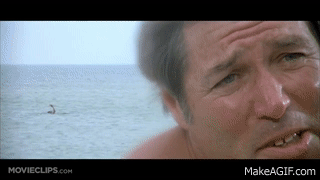
Brody's point of view in seeing an over the shoulder shot of the man as an obstacle, paired with the girl as a two shot. Suggests his attention is always on the sea. The tilt-up emphasises the attention and paranoia Brody has.
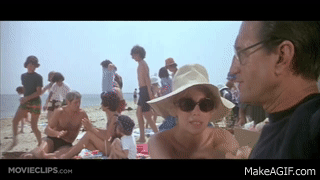
The two mid-shot places Brody to the far right to suggest his confined space away from the sea- suggesting fear. The kids run to the left, becoming out of frame and symbolising out of safety hands.
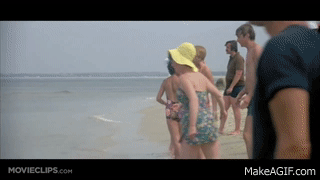
The mother of the victim walks towards the somewhat stationary tracking shot; the attention is centred as we see her in a close up. She also manually has to move towards the camera; helpless victim with not even the film's help.

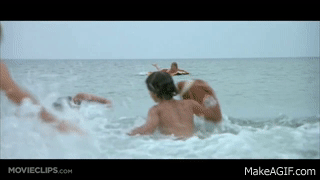

The old man becomes visually larger than Brody, who symbolizes a superior male figure over Brody's stable- in his chair- masculinity.
The children are positioned to swim out to the sea in Brody's point of view shot of an eye line angle. This presents the audience in the same level as the sea; they are as vulnerable to the danger as the children; the potential victims.
A shaky point of view shot of the supposed shark hides the physical identity of the antagonist, making the mystery of the shark/the figure's identity as a powerful antagonist.
Studying the practical use of applied cinematography and its diverse compilation of shot types, camera movements and angles to other micro-elements in the “Jaws” clip, proved to create powerful meanings and moods of tension, shock, and insecurity. Also, learning from a professional director of photography of his roles and responsibilities provided more insight and awareness of the job the DoPs hold in creating a piece of film, which can be applied to the case of those capturing the horror in “Jaws”.
Relating to GRATIFLY, I am now able to understand Ryu’s job as the Director of Photography, and is more aware of his responsibilities to provide more appropriate work flow and jobs for him to do. This creates a better work chemistry between us, and the workload is fairly given. Moreover, referring to the film crew hierarchy, the dream team are able to know who and which department to send queries, approvals or work towards without wasting time in sending to the incorrect personnel; as DoP, Ryu will know to refer to me for understanding my vision and trying to grasp it, as so will I -as the Director- to refer to the higher position of “Producer”, in which Toy will provide me with appropriate and correct orders and information of budget limits, equipment availability, and screenplay time limit.
Relate;



CINEMATOGRAPHY:
THE LIGHTING


Use of various light sources, both artificial and natural, to achieve some aesthetic or practical effect while illuminating a scene.
Lighting is a micro element in the film industry which is employed in scenes of a film to help convey mood, theme, characters and genre.
The Realm of Lighting: What are the main aspects and key terms?
-
Depth of field - the distance between the nearest and farthest objects in a scene that appear acceptably sharp in an image.
-
Colour - the shades that, when applied to lighting, connotes to different emotions
-
Brightness - the intensity of the reflection of light
-
Contrast - range of tones between pure white and pure black
-
Grain - presence of small particles in a dark frame
-
Quality of Light - the softness or harshness of lighting intensity on an object
-
Perspective - sense of depth or spatial relationships between objects in the photo
-
Focus - edges of what you see are clear and sharp in the frame
-
Saturation - how rich the colours appear through the screen
-
Look - the overall visual feel of the movie





Reflect;
LIGHTING SETUP KEY TERMS
The Key... highlights one side of the characters
The Fill… can shine from the other side to eliminate shadow
The Rim… shown from the back

In GRATIFLY, Toy is the Director of Lighting or the Gaffer who is responsible for the shades of colour presented in the scenes, but more importantly, the perspective, focus, brightness and the depth of field to create meaning. For example, Toy advised the DoP who is Ryu, to focus on the knife I was holding over my face in a big close up and concerning the depth of field in which the forks are accentuated with the hall’s artificial lighting for brightness. This makes the scene clearer of our intentions to show a symbolic ‘trapping’ of the protagonist through focus on mise en scene, and blurring of the character to become irrelevant.
LIGHTING SETUP
KEY
LIGHTING
FILL
LIGHTING
RIM
LIGHTING




SUBJECT






LIGHTING TYPES
SILHOUETTE
Absence of key and fill lighting
Created by backlighting a subject
GOLDEN HOUR
A period shortly after sunrise or before sunset during which daylight is redder and softer than when the sun is higher in the sky, light is diffused throughout.
EXAM Q:
Watch the following ‘Sicario’ Clip and evaluate how effectively the meaning, situation and mood is communicated through the lighting aspect of cinematography?
in this question, refer to the aspects of LIGHTING only.
In the ‘Sicario’ clip, the situation of the armed forces and officials preparing for combat into danger is hinted through the manipulation and selection of shots that are nurtured to provide a threatening or intense look through low key and fill lighting, as well as the natural light from the sunset.
The overall scene pursues the recurring dark shades of colour, where grey, black, and dark blue are used to explicitly connote the lack of happiness. This is further reinforced in the establishing shot of the mountains, to which only the body and the outline of a shadow-covered mountain is seen, giving a silhouette of them underneath a natural dark coloured sky. The perspective provides distance, which in turn gives a soft quality of light that covers the ground subjects with shadow and less focus. This gives the establishing shot a sense of darkness and a mood of gloomy and dangerous.
Mood and meaning is strengthened by the combination of lighting and mise en scene. Since the set is very dimly-lit, the possible use of a low level and soft key and fill lighting is used to form and shape the face of the FBI agents, enough to see their facial expressions, much not enough to shine to uncover the shadows on their costumes and bodies, hinting the danger engulfing them, and the sense of security becomes reduced. The choice of costume colour of full black masks, hats, special force suits, and guns complement the theme of black and darkness to suggest danger and loss of hope. This is seen in the depth of field shot where the character wearing full black is positioned towards the camera, but due to wearing full black with low key brightness in the artificial lighting, and the natural light of the background being darker in brightness, his face then becomes focused instead, causing contrast of his white face to the black-dominated frame and background. This may hint how the shadows and dark lighting metaphorically engulf him, putting him in a potential cornered position of incoming danger and threat.
Filming at a golden hour, the soldiers are seen to march towards the horizon and away from the camera. Their silhouettes are contrasted to the higher level of brightness the natural sunset provides in the corner of the frame, giving the sequence a look of heroism, potentially marching to revive the ‘last ray of hope’.
SOUND AND MUSIC
A micro element in the film industry.
The audible aspects that make up a film's mood, including dialogue and music that is used to convey emotions.
What is Sound?
Sound refers to everything we hear in a movie, such as the dialogue, sound effect, and backing track that is employed to heighten or create an implicit or explicit ambient or emotion of a scene, sometimes impacting the whole film, or reused as a le-motif throughout the film. It can be used to hint, suggest, tell and create the location of the scene, advance events of the plot, aiding character development, and ease the conveying of the desired emotions to the audience.
Research; An important micro-element in making a film, sound should not be looked over as it can be used to undermine and implicitly suggest meaning which can become striking in scenes that require thought over matter.
Diegetic Sound
Non-Diegetic Sound
Audio elements that exist in the world outside the film's realm, this being the reality of our world.
Only audiences experience this.
Musical scores, sound effects, credits staff roll.






Audio elements that come from and can be experienced from the world inside the screen.
Both audience and characters experience this.
Dialogue, footsteps, barking, shouting.
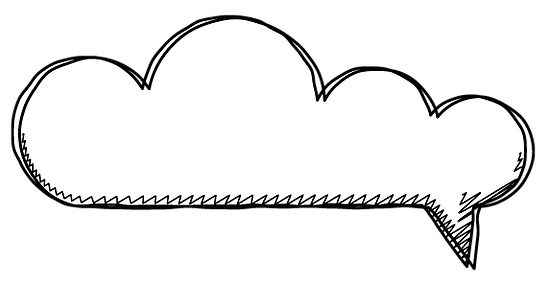
MUSIC
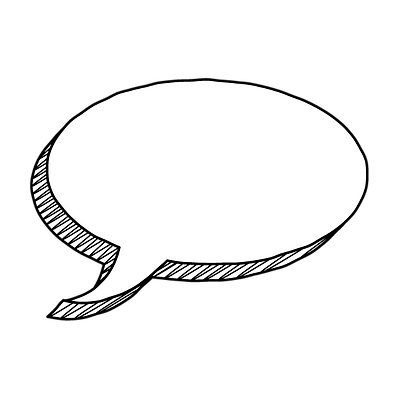
SOUND
EFFECTS

